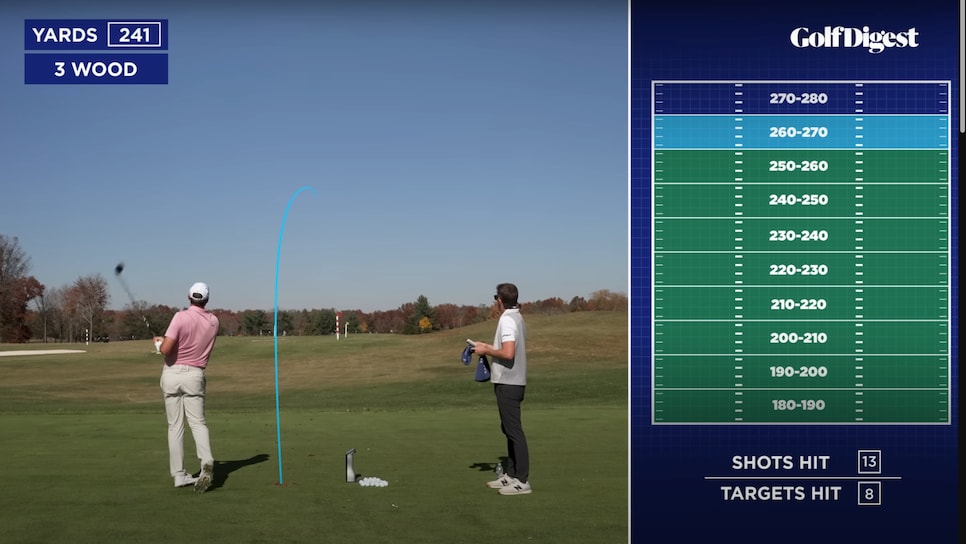Scottie Scheffler has landed on a ball-striking balance that, very clearly, works.
His longtime coach keeps the key technical points of his golf swing in check. Scottie takes ownership over his fundamentals, like his grip. He plots his way around the course using a smart strategy, and when it’s game time, he knows how to get dialed.
Scheffler talked about that during our recent episode of The Golf Digest Grid Challenge, which you can watch below. The World No. 1 says that for him, it comes down to paying attention to four numbers while he practices.
“On my machine at home I have four numbers that pop up,” Scheffler says. “Distance, spin, ball speed, clubhead speed.”
Here’s why…
1. Carry Distance
The first, and most important number, on Scheffler’s list is carry distance. The total distance (which includes roll) changes based on conditions, but Scheffler knows he can adapt for that if his carry distance is where he wants it. Making sure he both knows his stock yardages for the week, and is hitting his stock consistently, is priority number one for Scheffler.
“If the distance is where I think it should be, I don’t look at anything else,” he says.
Do you know your stock numbers that well? If not, you should probably learn them.
 2. Spin Rate
2. Spin Rate
If Scheffler isn’t hitting his stock numbers, he clicks into problem-solving mode.
That starts with spin rate. He may not be hitting stock yardages because he didn’t hit it perfectly (we’ll get to that next), but he is making sure his spin rate stays generally consistent. If he sees his spin rate jump wildly high or low on a given shot, he knows that shot is an outlier—maybe the grooves were dirty, or the ball was wet. Either way, not something to worry about.
“If I see the spin isn’t matched up to how I hit it, it might be because the ball is a little wet or something,” he says. “In my head I’m able to toss it out and hit another shot.”
It’s when his spin rate stays consistent from shot to shot but he’s still not hitting his carry distances that Scottie looks at the other metrics.
During the Masters this year @chambleebrandel did a fantastic segment comparing Scottie’s golf swing to Jack’s.
I still think about it every time I watch Scottie swing a club. Can’t unsee it. pic.twitter.com/xjj3oVkcVG
— LKD (@LukeKerrDineen) October 25, 2024
3. Ball Speed
Oversimplified, consider ball speed your ‘how well did I hit it’ metric. Shots off the center will have the highest ball speeds. The more off-center you get, generally, the lower the ball speed.
In all of these, Scheffler is looking for consistency. For the rest of us, if you see your ball speed jumping around wildly, you know there’s a contact consistency issue for you or your coach to solve. If you don’t, you’ll probably continue to miss short.
4. Clubhead Speed
Let’s say you’re not hitting your stock numbers, even though both your spin rate and ball speed numbers are consistently in a generally good place.
So what’s going on?
That’s where the clubhead speed metric can matter. It could be that you’re hitting the ball well, but that you’re swinging the club slower than usual, and not hitting your stock numbers because of it. There could be a few reasons for this. Maybe you haven’t warmed up. Or maybe it’s cold, so you’ve got some extra layers on.
You can watch the full episode of The Golf Digest Grid challenge right here:
This article was originally published on golfdigest.com
